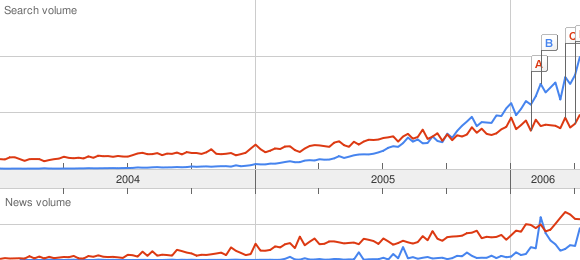A Good List of Open-Source Software
If you are at all curious in using open source software for personal computing, these two sites that I ran across this morning seem like great places to start:
Open Source Windows - Free, Open-Source software for Windows
Open Source Mac - Free, Open-Source software for Mac OS X
Open Source Mac/Open Source Windows is a simple list of the best free and open source software for Mac OS X/Windows. We aren't trying to be a comprehensive listing of every open-source mac/windows app, instead we want to showcase the best, most important, and easiest to use. This page should be a handy reference and a useful tool for getting more people to start using free and open-source software.
I'm not sure who maintains these sites, but they seem to be right on target in their recommendations. And they are not biased toward Mac or Windows! They just need a list for Linux too.

